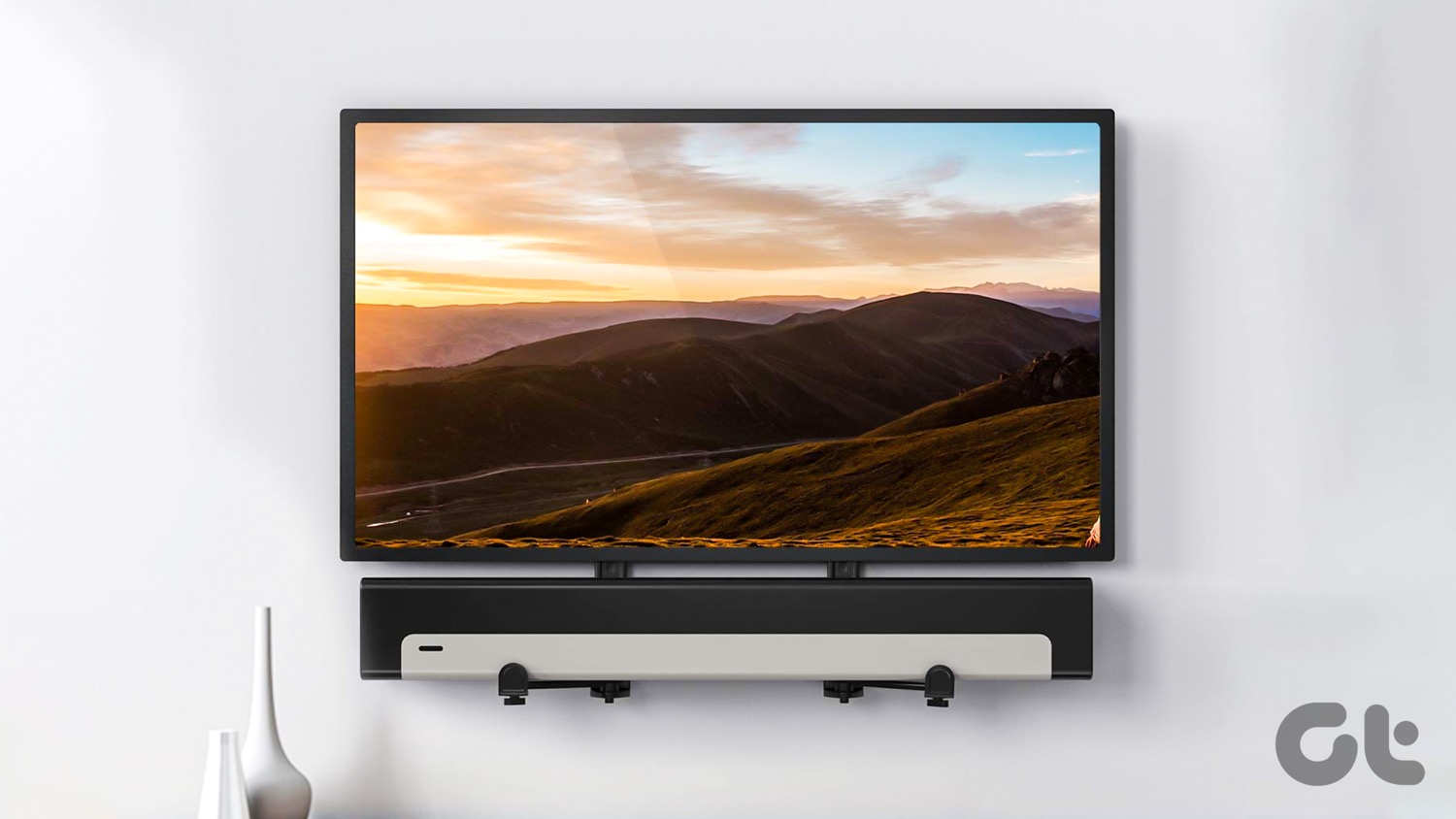But to truly elevate your audio experience, you need a soundbar that will perfectly complement your TV. So if you wish to invest in a soundbar, here are some important factors to consider when you choose the right soundbar for your TV.
1. Checking the Soundbar Shape and Size
Before getting into any technical details, let’s start with the exterior of a soundbar. Just like how you consider the size of your TV before making the purchase, you also need to check the shape and size of the soundbar. You’ll need to measure the dimensions of your TV stand or rack to compare it with the dimensions of your soundbar. Ensure enough room below the soundbar to avoid harming the movement of drivers. That’s because not all soundbars support wall mounting. So you’ll need to check for wall mounting support before you consider a soundbar.
2. Checking the Number of Channels
Whenever you read the specifications of a soundbar, the number of channels might throw you off a bit. For example, if a soundbar states 2.1 channels, it comes with 2 speakers and 1 subwoofer. Similarly, a particular Sony soundbar with 7.1.2 channels means it has 7 regular speakers at or near the ear level, 1 subwoofer and 2 speakers that try to recreate sound as if it’s coming from above your head. Typically, the two numbered or three numbered mention of channels mostly relates to the total type and number of speakers in a soundbar. You may also look at 5.1.2 channel soundbars which support Dolby Atmos or DTS:X formats. But the most important channel is the center channel that outputs clear dialogue. Therefore, the best option is to go for a 3.1 channel soundbar if you want to hear the dialogues clearly while watching content. Do note that the size of the soundbar will increase with the number of channels.
You can also read our post where we list the best options for soundbars with Dolby Atmos support.
3. Check if the Soundbar Is Active or Passive
There are two kinds of soundbars available – Active soundbars and Passive soundbars. The biggest difference between the two is that Active soundbars don’t have to rely on a separate external receiver or amplifier. They already include an amplifier that makes it easier to use with movies and music. You need not connect multiple speakers to achieve a surround sound effect. On the other hand, a Passive soundbar needs to be connected with multiple speakers due to the lack of an amplifier to get a better audio output. With a Passive soundbar, you have the option of upgrading individual speakers in your home theatre setup. On the other hand, if the Active soundbar malfunctions, you will have to get a new one. Therefore, a Passive soundbar is more futureproof.
4. Check for Connectivity Options
After sound quality, you’ll need to focus on the connectivity options available with your soundbar. If you have multiple devices like Apple TV 4K, a 4K Blu-ray Player, gaming console and set-top box, you need to look for those specific connectivity options available while shopping for a soundbar. It would be best if your soundbar supports HDMI ARC or Audio Return Channel. This would help by removing the need of too many cables for connecting your devices. For example, you can directly connect your Apple TV 4K with the HDMI ARC port on your soundbar using a single HDMI cable. But do note that HDMI ARC supports Dolby Digital Plus and Dolby Atmos audio only from streaming platforms like Netflix, Prime Video, Hulu, and a few others. So if you are into collecting Blu-rays and 4K Blu-rays, you’ll need a soundbar that supports eARC or Enhanced Audio Return Channel. An HDMI eARC port helps by sending higher quality lossless audio like Dolby TrueHD, Dolby Atmos, DTS-HD Master Audio and DTS:X through your soundbar at a speed of 38Mbps.
Lastly, Bluetooth connectivity support can be a great help to connect your phone or other portable media players to play music using the soundbar.
5. Check Support for Voice Assistant
It is an optional, but a subjective choice. The Voice Assistants like Alexa, Siri and Google Assistant help you connect and manage several smart appliances in your home, including the soundbar. So if you wish to wirelessly control the audio playback on your soundbar or you have elders who find it difficult to use the remote, the support for Voice Assistants is something to look for in a soundbar. You can read our post that suggests the best soundbars with Google Assistant support.
Choose What’s Right for You
By keeping in mind all the factors mentioned above, you can choose the best soundbar for your home setup that checks all the right boxes and gives the best value for your money. The above article may contain affiliate links which help support Guiding Tech. However, it does not affect our editorial integrity. The content remains unbiased and authentic.













